Communication Types
Schramm Communication Model
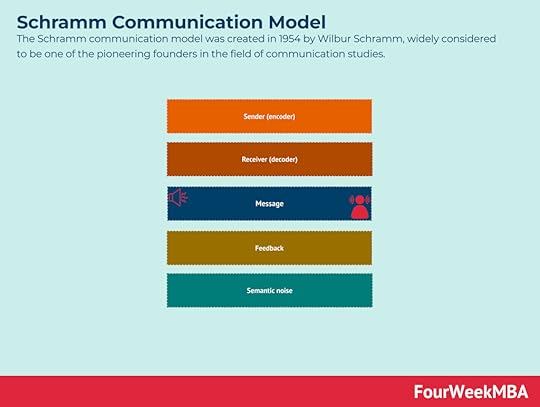 The Schramm communication model was created in 1954 by Wilbur Schramm, widely considered to be one of the pioneering founders in the field of communication studies.
Noise in Communication
The Schramm communication model was created in 1954 by Wilbur Schramm, widely considered to be one of the pioneering founders in the field of communication studies.
Noise in Communication
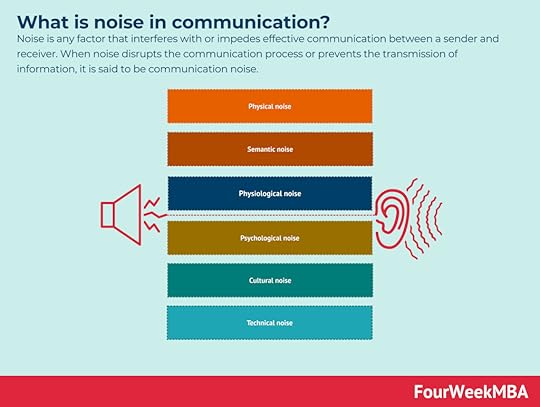 Noise is any factor that interferes with or impedes effective communication between a sender and receiver. When noise disrupts the communication process or prevents the transmission of information, it is said to be communication noise.
Helical Model of Communication
Noise is any factor that interferes with or impedes effective communication between a sender and receiver. When noise disrupts the communication process or prevents the transmission of information, it is said to be communication noise.
Helical Model of Communication
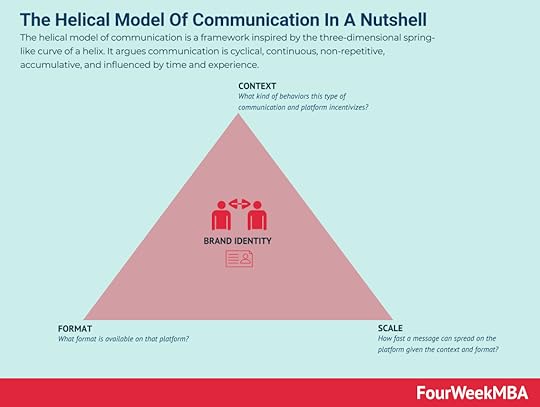 The helical model of communication is a framework inspired by the three-dimensional spring-like curve of a helix. It argues communication is cyclical, continuous, non-repetitive, accumulative, and influenced by time and experience.
Integrated Marketing Communication
The helical model of communication is a framework inspired by the three-dimensional spring-like curve of a helix. It argues communication is cyclical, continuous, non-repetitive, accumulative, and influenced by time and experience.
Integrated Marketing Communication
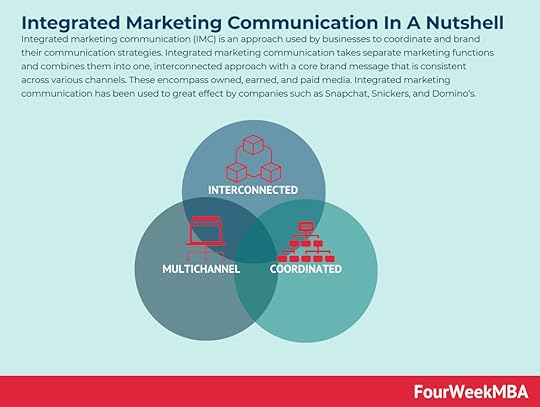 Integrated marketing communication (IMC) is an approach used by businesses to coordinate and brand their communication strategies. Integrated marketing communication takes separate marketing functions and combines them into one, interconnected approach with a core brand message that is consistent across various channels. These encompass owned, earned, and paid media. Integrated marketing communication has been used to great effect by companies such as Snapchat, Snickers, and Domino’s.
Social Penetration Theory
Integrated marketing communication (IMC) is an approach used by businesses to coordinate and brand their communication strategies. Integrated marketing communication takes separate marketing functions and combines them into one, interconnected approach with a core brand message that is consistent across various channels. These encompass owned, earned, and paid media. Integrated marketing communication has been used to great effect by companies such as Snapchat, Snickers, and Domino’s.
Social Penetration Theory
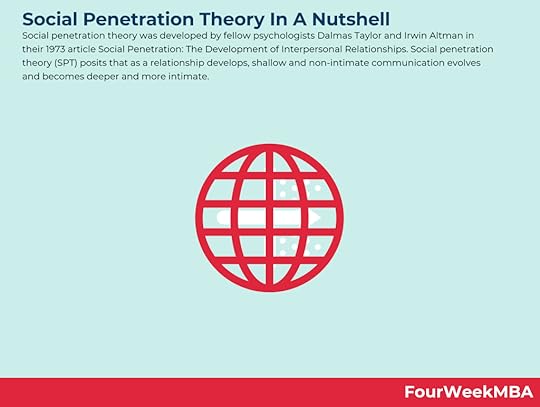 Social penetration theory was developed by fellow psychologists Dalmas Taylor and Irwin Altman in their 1973 article Social Penetration: The Development of Interpersonal Relationships. Social penetration theory (SPT) posits that as a relationship develops, shallow and non-intimate communication evolves and becomes deeper and more intimate.
Hypodermic Needle Theory
Social penetration theory was developed by fellow psychologists Dalmas Taylor and Irwin Altman in their 1973 article Social Penetration: The Development of Interpersonal Relationships. Social penetration theory (SPT) posits that as a relationship develops, shallow and non-intimate communication evolves and becomes deeper and more intimate.
Hypodermic Needle Theory
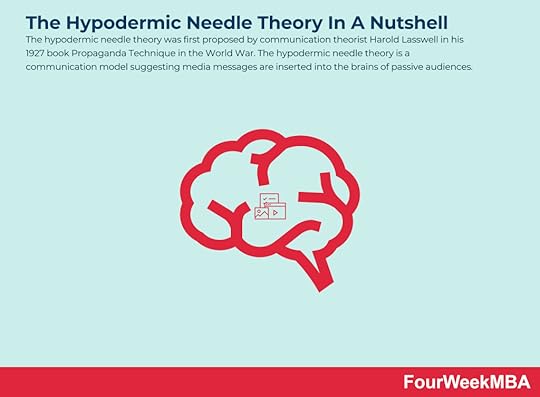 The hypodermic needle theory was first proposed by communication theorist Harold Lasswell in his 1927 book Propaganda Technique in the World War. The hypodermic needle theory is a communication model suggesting media messages are inserted into the brains of passive audiences.
Aristotle’s Model of Communication
The hypodermic needle theory was first proposed by communication theorist Harold Lasswell in his 1927 book Propaganda Technique in the World War. The hypodermic needle theory is a communication model suggesting media messages are inserted into the brains of passive audiences.
Aristotle’s Model of Communication
 The Aristotle model of communication is a linear model with a focus on public speaking. The Aristotle model of communication was developed by Greek philosopher and orator Aristotle, who proposed the linear model to demonstrate the importance of the speaker and their audience during communication.
Transactional Model of Communication
The Aristotle model of communication is a linear model with a focus on public speaking. The Aristotle model of communication was developed by Greek philosopher and orator Aristotle, who proposed the linear model to demonstrate the importance of the speaker and their audience during communication.
Transactional Model of Communication
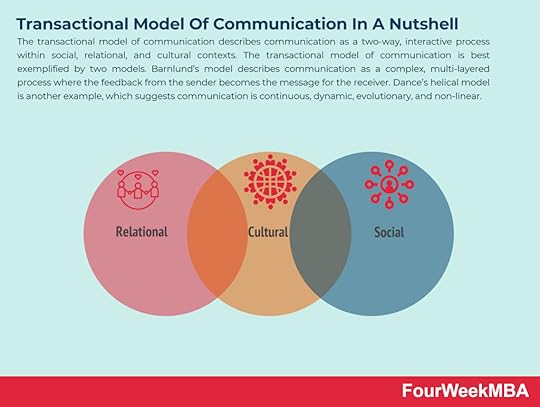 The transactional model of communication describes communication as a two-way, interactive process within social, relational, and cultural contexts. The transactional model of communication is best exemplified by two models. Barnlund’s model describes communication as a complex, multi-layered process where the feedback from the sender becomes the message for the receiver. Dance’s helical model is another example, which suggests communication is continuous, dynamic, evolutionary, and non-linear.
Communication Cycle
The transactional model of communication describes communication as a two-way, interactive process within social, relational, and cultural contexts. The transactional model of communication is best exemplified by two models. Barnlund’s model describes communication as a complex, multi-layered process where the feedback from the sender becomes the message for the receiver. Dance’s helical model is another example, which suggests communication is continuous, dynamic, evolutionary, and non-linear.
Communication Cycle
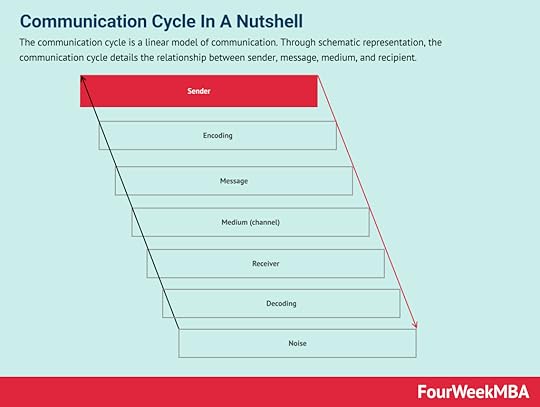 The linear model of communication is a relatively simplistic model envisaging a process in which a sender encodes and transmits a message that is received and decoded by a recipient. The linear model of communication suggests communication moves in one direction only. The sender transmits a message to the receiver, but the receiver does not transmit a response or provide feedback to the sender.
Uncertainty Reduction Theory
The linear model of communication is a relatively simplistic model envisaging a process in which a sender encodes and transmits a message that is received and decoded by a recipient. The linear model of communication suggests communication moves in one direction only. The sender transmits a message to the receiver, but the receiver does not transmit a response or provide feedback to the sender.
Uncertainty Reduction Theory
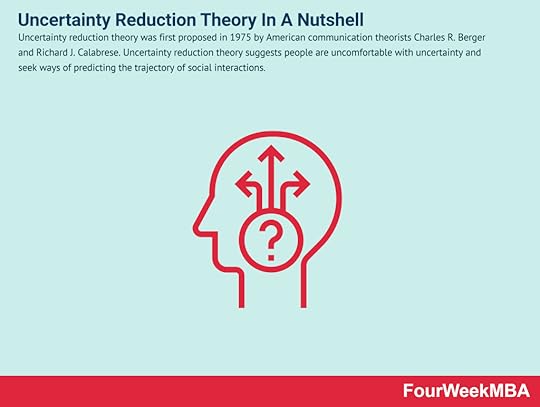 Uncertainty reduction theory was first proposed in 1975 by American communication theorists Charles R. Berger and Richard J. Calabrese. Uncertainty reduction theory suggests people are uncomfortable with uncertainty and seek ways of predicting the trajectory of social interactions.
Berlo’s SMCR Model
Uncertainty reduction theory was first proposed in 1975 by American communication theorists Charles R. Berger and Richard J. Calabrese. Uncertainty reduction theory suggests people are uncomfortable with uncertainty and seek ways of predicting the trajectory of social interactions.
Berlo’s SMCR Model
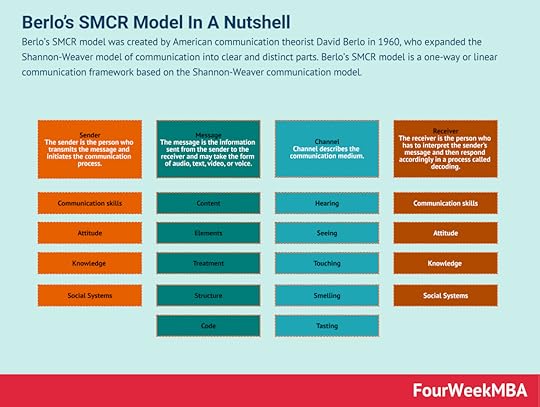 Berlo’s SMCR model was created by American communication theorist David Berlo in 1960, who expanded the Shannon-Weaver model of communication into clear and distinct parts. Berlo’s SMCR model is a one-way or linear communication framework based on the Shannon-Weaver communication model.
Lasswell Communication Model
Berlo’s SMCR model was created by American communication theorist David Berlo in 1960, who expanded the Shannon-Weaver model of communication into clear and distinct parts. Berlo’s SMCR model is a one-way or linear communication framework based on the Shannon-Weaver communication model.
Lasswell Communication Model
 The Lasswell communication model is a linear framework for explaining the communication process through segmentation. Lasswell proposed media propaganda performs three social functions: surveillance, correlation, transmission. Lasswell believed the media could impact what viewers believed about the information presented.
The Lasswell communication model is a linear framework for explaining the communication process through segmentation. Lasswell proposed media propaganda performs three social functions: surveillance, correlation, transmission. Lasswell believed the media could impact what viewers believed about the information presented.
 The Schramm communication model was created in 1954 by Wilbur Schramm, widely considered to be one of the pioneering founders in the field of communication studies.
Noise in Communication
The Schramm communication model was created in 1954 by Wilbur Schramm, widely considered to be one of the pioneering founders in the field of communication studies.
Noise in Communication
 Noise is any factor that interferes with or impedes effective communication between a sender and receiver. When noise disrupts the communication process or prevents the transmission of information, it is said to be communication noise.
Helical Model of Communication
Noise is any factor that interferes with or impedes effective communication between a sender and receiver. When noise disrupts the communication process or prevents the transmission of information, it is said to be communication noise.
Helical Model of Communication
 The helical model of communication is a framework inspired by the three-dimensional spring-like curve of a helix. It argues communication is cyclical, continuous, non-repetitive, accumulative, and influenced by time and experience.
Integrated Marketing Communication
The helical model of communication is a framework inspired by the three-dimensional spring-like curve of a helix. It argues communication is cyclical, continuous, non-repetitive, accumulative, and influenced by time and experience.
Integrated Marketing Communication
 Integrated marketing communication (IMC) is an approach used by businesses to coordinate and brand their communication strategies. Integrated marketing communication takes separate marketing functions and combines them into one, interconnected approach with a core brand message that is consistent across various channels. These encompass owned, earned, and paid media. Integrated marketing communication has been used to great effect by companies such as Snapchat, Snickers, and Domino’s.
Social Penetration Theory
Integrated marketing communication (IMC) is an approach used by businesses to coordinate and brand their communication strategies. Integrated marketing communication takes separate marketing functions and combines them into one, interconnected approach with a core brand message that is consistent across various channels. These encompass owned, earned, and paid media. Integrated marketing communication has been used to great effect by companies such as Snapchat, Snickers, and Domino’s.
Social Penetration Theory
 Social penetration theory was developed by fellow psychologists Dalmas Taylor and Irwin Altman in their 1973 article Social Penetration: The Development of Interpersonal Relationships. Social penetration theory (SPT) posits that as a relationship develops, shallow and non-intimate communication evolves and becomes deeper and more intimate.
Hypodermic Needle Theory
Social penetration theory was developed by fellow psychologists Dalmas Taylor and Irwin Altman in their 1973 article Social Penetration: The Development of Interpersonal Relationships. Social penetration theory (SPT) posits that as a relationship develops, shallow and non-intimate communication evolves and becomes deeper and more intimate.
Hypodermic Needle Theory
 The hypodermic needle theory was first proposed by communication theorist Harold Lasswell in his 1927 book Propaganda Technique in the World War. The hypodermic needle theory is a communication model suggesting media messages are inserted into the brains of passive audiences.
Aristotle’s Model of Communication
The hypodermic needle theory was first proposed by communication theorist Harold Lasswell in his 1927 book Propaganda Technique in the World War. The hypodermic needle theory is a communication model suggesting media messages are inserted into the brains of passive audiences.
Aristotle’s Model of Communication
 The Aristotle model of communication is a linear model with a focus on public speaking. The Aristotle model of communication was developed by Greek philosopher and orator Aristotle, who proposed the linear model to demonstrate the importance of the speaker and their audience during communication.
Transactional Model of Communication
The Aristotle model of communication is a linear model with a focus on public speaking. The Aristotle model of communication was developed by Greek philosopher and orator Aristotle, who proposed the linear model to demonstrate the importance of the speaker and their audience during communication.
Transactional Model of Communication
 The transactional model of communication describes communication as a two-way, interactive process within social, relational, and cultural contexts. The transactional model of communication is best exemplified by two models. Barnlund’s model describes communication as a complex, multi-layered process where the feedback from the sender becomes the message for the receiver. Dance’s helical model is another example, which suggests communication is continuous, dynamic, evolutionary, and non-linear.
Communication Cycle
The transactional model of communication describes communication as a two-way, interactive process within social, relational, and cultural contexts. The transactional model of communication is best exemplified by two models. Barnlund’s model describes communication as a complex, multi-layered process where the feedback from the sender becomes the message for the receiver. Dance’s helical model is another example, which suggests communication is continuous, dynamic, evolutionary, and non-linear.
Communication Cycle
 The linear model of communication is a relatively simplistic model envisaging a process in which a sender encodes and transmits a message that is received and decoded by a recipient. The linear model of communication suggests communication moves in one direction only. The sender transmits a message to the receiver, but the receiver does not transmit a response or provide feedback to the sender.
Uncertainty Reduction Theory
The linear model of communication is a relatively simplistic model envisaging a process in which a sender encodes and transmits a message that is received and decoded by a recipient. The linear model of communication suggests communication moves in one direction only. The sender transmits a message to the receiver, but the receiver does not transmit a response or provide feedback to the sender.
Uncertainty Reduction Theory
 Uncertainty reduction theory was first proposed in 1975 by American communication theorists Charles R. Berger and Richard J. Calabrese. Uncertainty reduction theory suggests people are uncomfortable with uncertainty and seek ways of predicting the trajectory of social interactions.
Berlo’s SMCR Model
Uncertainty reduction theory was first proposed in 1975 by American communication theorists Charles R. Berger and Richard J. Calabrese. Uncertainty reduction theory suggests people are uncomfortable with uncertainty and seek ways of predicting the trajectory of social interactions.
Berlo’s SMCR Model
 Berlo’s SMCR model was created by American communication theorist David Berlo in 1960, who expanded the Shannon-Weaver model of communication into clear and distinct parts. Berlo’s SMCR model is a one-way or linear communication framework based on the Shannon-Weaver communication model.
Lasswell Communication Model
Berlo’s SMCR model was created by American communication theorist David Berlo in 1960, who expanded the Shannon-Weaver model of communication into clear and distinct parts. Berlo’s SMCR model is a one-way or linear communication framework based on the Shannon-Weaver communication model.
Lasswell Communication Model
 The Lasswell communication model is a linear framework for explaining the communication process through segmentation. Lasswell proposed media propaganda performs three social functions: surveillance, correlation, transmission. Lasswell believed the media could impact what viewers believed about the information presented.
The Lasswell communication model is a linear framework for explaining the communication process through segmentation. Lasswell proposed media propaganda performs three social functions: surveillance, correlation, transmission. Lasswell believed the media could impact what viewers believed about the information presented. The post Communication Types appeared first on FourWeekMBA.
Published on November 07, 2022 13:08
No comments have been added yet.



